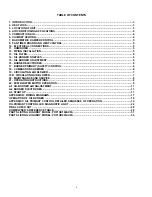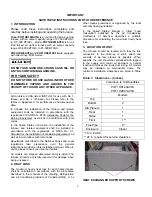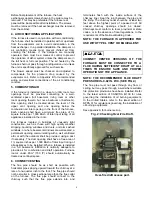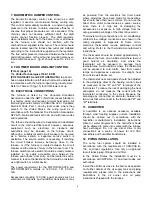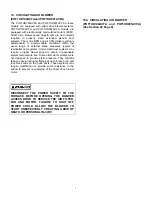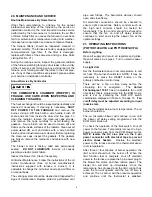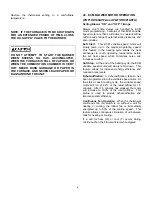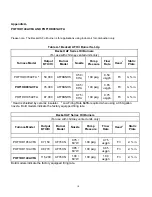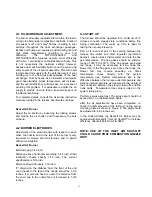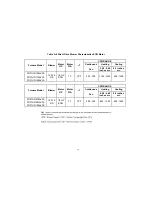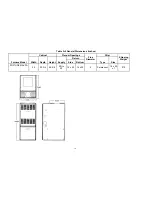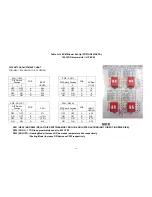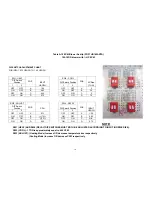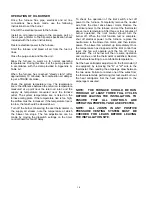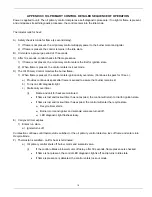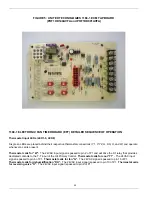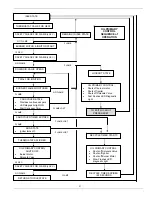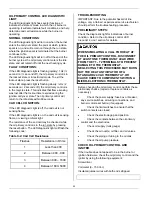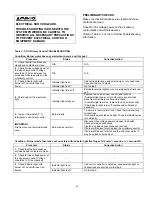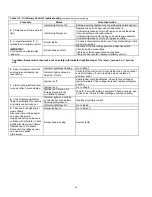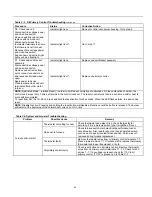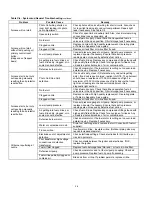
A.1 OIL BURNER AIR ADJUSTMENT
The burner air supply is adjusted to maintain the
fuel to
air
ratio
to obtain ideal combustion conditions. A lack of
air causes "soft" and "sooty" flames, resulting in soot
build-up throughout the heat exchanger passages.
Excess combustion air causes a bright roaring fire and
high stack temperatures resulting in poor fuel
efficiency. The POF1HD140AVFA and
POF1HD091AVFA furnaces operate most efficiently
with a No. 1 smoke spot on the Bacharach Scale. This
is not necessarily the optimum setting; however,
because dust will inevitably build up on the air moving
components of the oil burner assembly. This will result
in decreased air supply with the potential result of soot
building up in the flue gas passageways of the heat
exchanger. Soot behaves as an insulator and impairs
good heat transfer. Stack temperature will increase,
and the overall efficiency will decrease. As a means of
avoiding this problem, it is advisable to adjust the air
supply to provide no more than a trace smoke spot on
the Bacharach Scale.
For complete details, consult the oil burner instruction
manual provided in the furnace documents envelope.
Beckett AF Burner
Adjust the air shutter by loosening the locking screws
and moving the air shutter, and if necessary, the bulk
air band.
A.2 BURNER ELECTRODES
Adjustment of the electrode tips with respect to each
other, the nozzle, and to the rest of the burner is very
important to ensure smooth start-ups and to permit
efficient combustion.
Beckett AF Burner
Electrode gap: 5/32 inch.
Distance above horizontal centerline: 5/16 inch. Older
instruction sheets specify 7/16 inch. The current
specification is 5/16 inch.
Distance ahead of nozzle: 1/16 inch.
“Z” dimension, the distance from the front of the end
cone (head) to the face of the nozzle should be 1-1/8
inches. If a ceramic head is used, the distance from
the end cone to the nozzle face is increased to 1-3/8
inches.
A.3 START UP
The furnace should be operated for a minimum of 10
minutes to reach steady state conditions before fine
tuning combustion. The warm up time is ideal for
testing the oil pump pressure.
Drill a 1/4-inch test port in the venting between the
furnace flue outlet and draft regulator (barometric
damper). Insert a stack thermometer and note the flue
gas temperature. The flue gases should be within a
range of 350°F to 450°F. If the flue gases are below
the range, it may be necessary to slow down the
blower fan. If the flue gases are above the range, the
blower fan may require speeding up. Stack
temperature varies directly with the system
temperature rise. System temperature rise is the
difference between the furnace outlet temperature and
furnace inlet temperature as measured in the vicinity of
the connection between the plenum take-offs and the
trunk ducts. Temperature rise value is listed on the
system rating plate.
Perform a smoke spot test. The smoke spot should not
exceed No. 1 on the Bacharach Scale.
After the air adjustments have been completed, re-
check the draft pressure at the test port on the burner
mounting plate as shown in Figure 2. The draft should
be adjusted to -0.02 inches w.c.
In the United States, the Beckett AF Burner may be
equipped with Beckett's "
Inlet Air Shut-Off
" to increase
efficiency. (Beckett Part No. AF/A 5861).
NOTE: USE OF THE INLET AIR SHUT-OFF
COULD CAUSE POST COMBUSTION NOZZLE
DRIP.
11
Summary of Contents for POF1HD091AVFA
Page 30: ...30...
Page 33: ...33...
Page 36: ...NOTES Nordyne Inc 8000 Phoenix Parkway O Fallon Missouri 63368 766B 0909...


